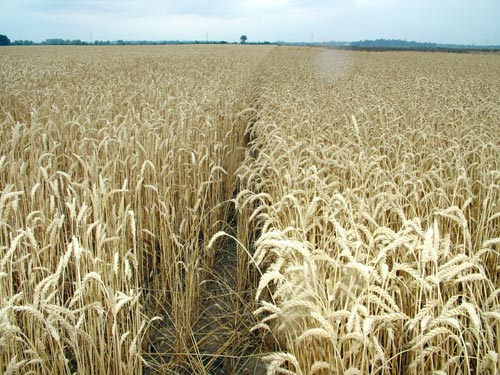October 1, 2010

Planting wheat early is very tempting, but it likely limits wheat grain productivity more than any other factor.
In fact, records from the Kentucky Wheat Production Contest (where winners typically produce more than 100 bushels per acre) rarely show growers planting prior to the recommended dates.
Planting wheat early needlessly exposes it to developmental, fertility, weed and numerous pest problems which ultimately limit yield potential. Our mild Southern winters further intensify this issue, because the onset and degree of dormancy may vary considerably from year to year.
Thus, the developmental advantages gained from planting summer crops early, such as corn and soybeans, do not apply to winter wheat.
The adverse effects from excessive fall growth include spring freeze injury, development of Barley yellow dwarf virus, Hessian fly and armyworm infestation, more disease infection, more weed competition, poor nutrient use, and increased lodging.
In fact, growers in north and south Mississippi experienced severe freeze injury during recent seasons — only the central Delta region has escaped serious damage. Yield loss resulting from spring freeze injury normally increases drastically with early-maturing wheat.
Thus, we need to carefully manage variety maturity and planting date, as both these factors affect wheat maturity.
Early-maturing varieties should be planted later than normal, to avoid excessive development, which could expose them to substantial freeze damage in the spring. Conversely, late-maturing wheat varieties should be planted before early varieties.
We should also plant multiple varieties differing in maturity, to spread risk, since temperatures also influence maturity.
Optimum wheat planting dates: Mississippi’s suggested wheat planting dates (within 10 to 14 days of the average first fall freeze date) should provide warm enough temperatures and long enough days for seedling emergence and tillering to begin before dormancy occurs. This can vary depending upon seasonal temperatures, but normally corresponds to:
• North and Central Mississippi: Oct. 15 to Nov. 10.
• Delta Region: Oct. 20 to Nov. 15.
• South Mississippi: Nov. 1 to Nov. 25.
• Coastal Region: Nov. 15 to Dec. 10.
A short list of variety suggestions for 2010 can be found at: 2010 MSU Wheat Variety Suggestions.
Editor’s note: This article appeared in the Sept. 24, 2010, issue of Mississippi Crop Situation 2010.
You May Also Like




